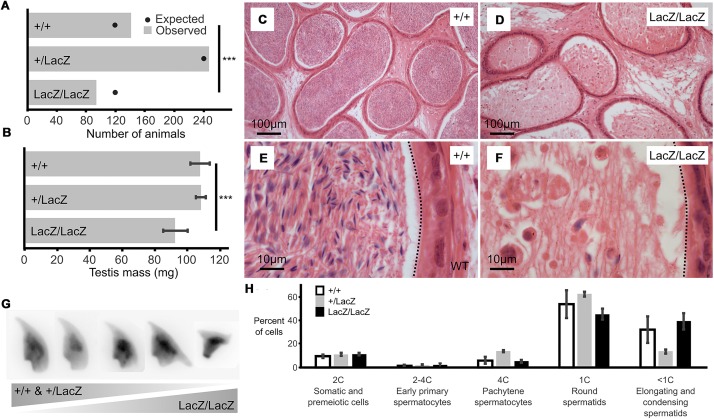FIGURE 1.
Male mice with reduced expression of Fbxo7 are sterile. (A) Colony data showing the genotypes of animals (n = 481) born from matings between heterozygous parents. All three potential genotypes are observed in the offspring, but the proportion of homozygous Fbxo7LacZ/LacZ offspring is lower than expected (∗∗∗ chi-squared goodness-of fit test p = 0.007 vs. Mendelian 1:2:1 expectation). (B) Average testis weight for each genotype (n = 6; WT and homozygous; n = 4, heterozygous LacZ; One-way ANOVA, ∗∗∗p = 0.001067). (C) Wild type cauda epididymis showing large numbers of stored sperm. (D) Fbxo7LacZ/LacZ cauda epididymis showing very few degenerating sperm. (E,F) High resolution zoom of sections (C,D). Dotted line indicates the border of the tubule lumen in each view. (G) Montage of DAPI-stained sperm nuclei showing the spectrum of sperm morphologies present (see also Supplementary Figure S1). (H) FACS quantitation of testis cells according to DNA content as measured by propidium iodide staining (note that highly condensed spermatids and mature sperm were not quantitated); n = 4 WT, 2 heterozygous, 2 homozygous LacZ mice.

